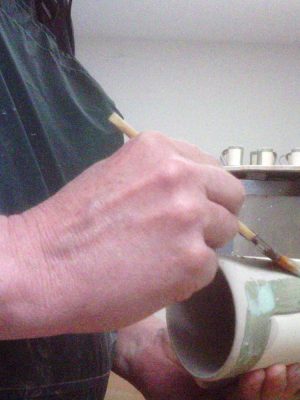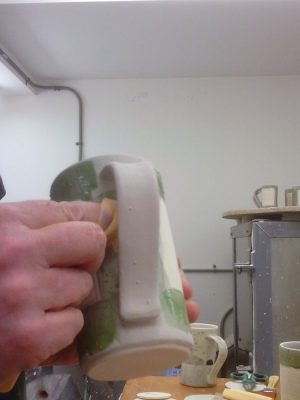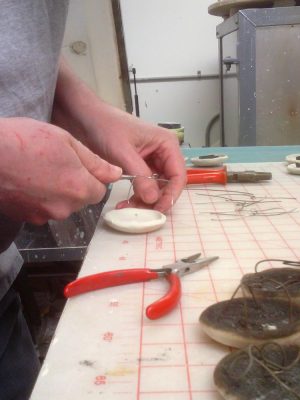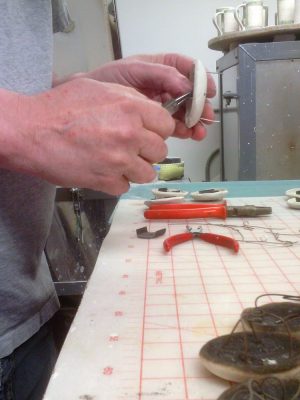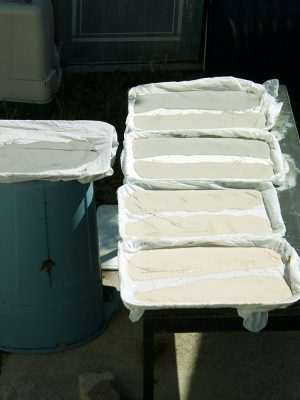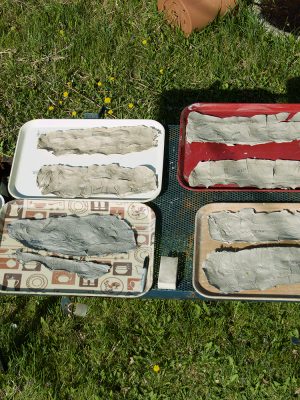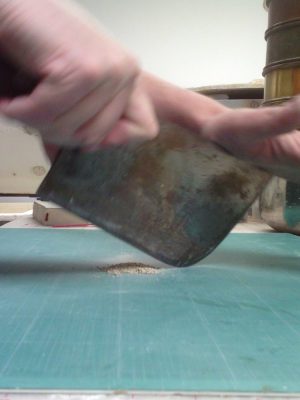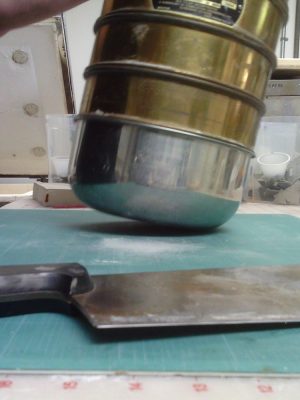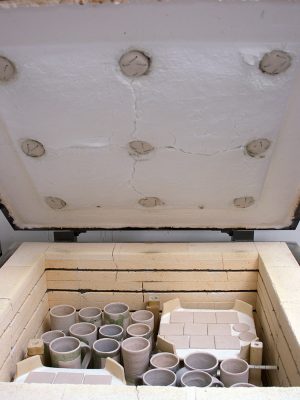Twenty assorted mugs and tumblers were taken through their sequence of glazing, waxing and more glazing.
Another square meter or so of mosaic tile was covered with the rotting grey glazes and odds and ends of different polymer mixes.
Didn’t make it to the supplier to get the missing connectors needed to fix the upright kiln.
Did have everything needed to fix the horizontal kiln. The metal buttons and stems used to keep the fibre attached to the lid were a poor choice by the manufacturer. Oxidized grains of metal fall onto the glazes below during the firing.
A few years back, I made porcelain covers to protect the work from the falling debris. Two sets as it happens. The first set has worked so well that the covers were full to overflowing with metallic debris. That combined with the stretching of the kiln wire used to secure them in place has led to more falling debris. It was time to instal the new covers. The whole interior seemed to brighten once it was done.
I am curious to see last week’s gradation of the cobalt free black in polymer form. 100 gram samples of each glaze step were prepared. The viscous mixtures were spread as thinly as possible over plastic bags and sun dried for two days. On the third day, samples of each were chopped, sieved, applied to test tiles and loaded into the kiln with the other work.
The kiln reached temperature mid morning today. Unloading tomorrow evening at the earliest.

